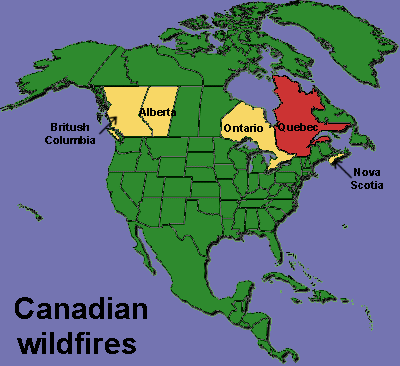
Circle the area on this map

C. Ontario has about 15 million residents, compared with about 8.7 million people in Quebec, the second most populous province. With a total area of 415,600 square miles, Ontario is the second-largest province behind Quebec’s 595,400 square miles.
D. The vast majority of Canada's population is concentrated in areas close to its southern border with the United States, with 86 percent of the population living in the four largest provinces. The population drops dramatically in the northern parts of the country.
B. The Nunavut territory is 725,000 square miles in the northernmost region of the country and has a population of about 40,000 people. That’s about 0.1 of a percent of Canada’s population.
C. Prince Edward Island is Canada’s smallest province, with a total area of less than 2,200 square miles. But, it has an average of 27.2 people for every square kilometer of the island on Canada’s Atlantic Coast. That compares with only 0.02 people per square kilometer in the northern giant Nunavut.